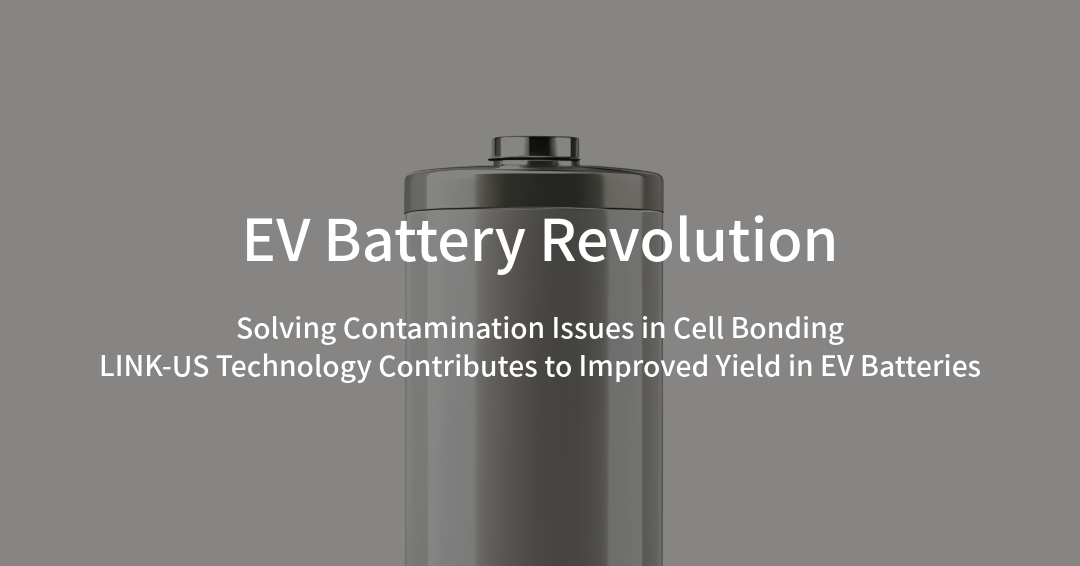For the Electric Vehicle (EV) market to grow sustainably, battery manufacturers face one overwhelming challenge: how to mass-produce high-quality cells at high yield rates. Specifically, "can bottom bonding" for cylindrical cells has been a major production bottleneck. Quality defects caused by spatter (metal fragments or projections generated during welding) have been a common industry headache.
table of contents
The Difficulty and Conventional Challenges of Can Bottom Bonding
The bottom of a cylindrical cell is a crucial bonding point that connects the external can to the internal electrodes and terminals. It demands both stable electrical conductivity and high mechanical strength. However, traditional laser or resistance welding methods suffered from the following issues:
- Spatter Generation: Microscopic metal fragments penetrate the cell interior, leading to short circuits and potential fire hazards.
- Thermal Degradation: High heat input degrades resin components like gaskets, compromising long-term reliability.
- Increased Cleaning and Inspection: The cost of spatter removal and intensive sample inspection rises significantly.
- Lower Yield: A single defective cell can render an entire battery pack unusable.
Consequently, battery production lines faced high defect rates and increased processing costs, hindering efficient mass production.
LINK-US Solution: Ultrasonic Complex Vibration Bonding (UCVB)
The proprietary Ultrasonic Complex Vibration Bonding (UCVB) technology developed by LINK-US fundamentally solves the challenges of can bottom bonding.
Its greatest feature is its status as a low-energy, low-heat input solid-state bonding process. Instead of melting the material, complex vibration rapidly breaks down surface oxide layers and achieves a strong, atomic-level bond with minimal damage.
This results in:
- Drastic Spatter Reduction: Eliminates the risk of internal short circuits.
- Low Thermal Impact: Minimizes material deformation and thermal degradation.
- Stable Bonding Quality: Directly improves production line yield.
- Dissimilar Material Compatibility: Capable of handling difficult-to-bond materials like Cu–Ni clad tabs.
Crucially, UCVB enables high-speed bonding for Cu-Ni plated steel can bottoms, a task that was difficult with conventional technologies.
Impact on Yield Improvement and Cost Reduction
Reducing the defect rate in can bottom bonding creates a massive impact on the manufacturing floor:
- Yield Improvement: Reduced scrap from defective cells increases overall production efficiency, directly cutting manufacturing costs per GWh.
- Process Reduction: Eliminates the need for burr removal and cleaning processes, and reduces inspection burden. Line throughput increases, accelerating production speed.
- Enhanced Safety: Lower risk of internal short circuits and gas generation improves cell safety and reduces recall risk.
- Extended Lifespan: Low-resistance and stable bonding minimizes degradation during charge/discharge cycles, extending battery life.
Impact on the EV Industry
In the rapidly expanding EV market, even a 1% reduction in the per-cell defect rate can translate into a multi-million dollar cost impact. Cylindrical cells, adopted by major manufacturers including Tesla and BYD, critically rely on high volume and cost competitiveness.
LINK-US's UCVB technology is a powerful tool for reducing "invisible losses" on the mass production floor and establishing a stable supply chain.
Summary
Burr defects in can bottom bonding have been a long-standing challenge in EV battery manufacturing. LINK-US's Ultrasonic Complex Vibration Bonding achieves stable bonding with low heat and low energy, simultaneously delivering improved yield, process reduction, and enhanced safety.
As the EV market continues its rapid expansion, this technology is set to become the new standard for highly efficient battery mass production.
→ For detailed technical review or to discuss a Proof of Concept (PoC), please contact LINK-US.

